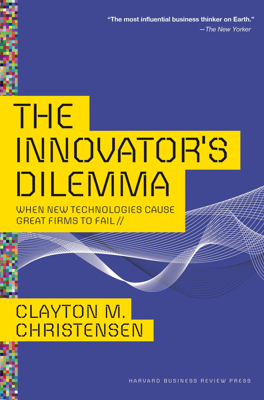How Can Great Firms Fail? Insights From the Hard Disk Drive Industry
Introduction to the Disk Drive Industry
- The disk drive industry is an ideal subject for studying technological change in business due to its rapid and pervasive evolution.
- The industry offers insights into why great companies fail despite being innovative and responsive to customer needs.
How Disk Drives Work
- Disk drives contain read-write heads, rotating disks, electric motors, and electronic circuits to control operations.
- Information is written using electromagnetism and read by changes in magnetic flux fields.
Early Development of Disk Drives
- IBM developed the first disk drive, RAMAC, between 1952 and 1956.
- Independent disk drive industry emerged in the 1960s with PCM and OEM markets.
- By the mid-1980s, the PCM market declined, and OEM adoption grew significantly.
Technological Evolution and Market Dynamics
- Disk drive technology saw a massive increase in storage capacity and reduction in size over the years.
- The industry underwent a "technology mudslide" hypothesis, suggesting rapid technological changes were hard to keep up with.
- However, the analysis showed that technological pace wasn't the root cause of failure; instead, the distinction between sustaining and disruptive technologies was crucial.
Sustaining Technological Changes
- Sustaining technologies improve product performance and are often led by established firms.
- Examples include thin-film heads, magnetic resistive heads, and architectural innovations like the Winchester drive.
- Leading firms excelled in these incremental and radical innovations, continually improving their products.
Disruptive Technological Changes
- Disruptive technologies introduce new performance trajectories, often leading to the failure of established firms.
- Miniaturization of disk drives (e.g., from 14-inch to 8-inch, 5.25-inch, and 3.5-inch) disrupted the existing market.
- Disruptive technologies often appeal to emerging markets and offer different attributes valued in these new segments.
Case Studies in Disruptive Innovations
- 8-inch Drives: Initially served minicomputers and eventually penetrated the mainframe market.
- 5.25-inch Drives: Pioneered by Seagate and others for desktop PCs, succeeding in new applications before replacing larger drives.
- 3.5-inch Drives: Spurred innovations in portable computing, led by Conner Peripherals.
- 2.5-inch Drives: Targeted portable devices, initially controlled by entrants like Prairietek before being overtaken by Conner Peripherals.
Challenges for Established Firms
- Established firms often fail to adopt disruptive technologies not due to technological incapability but due to strategic adherence to existing customers' demands.
- Marketing and executive decisions influenced by established customers delayed timely entry into emerging markets.
- Entrant firms led the adoption of disruptive technologies by targeting new markets and applications effectively.
Summary of Patterns
- Disruptive Innovations: Use known technologies in new architectures, creating new market applications.
- Sustaining Technologies: Aim to improve existing products following established performance trajectories.
- Entrant Leadership: Entrants consistently lead in adopting disruptive technologies, while established firms excel in sustaining innovations.
- Customer Influence: Established firms often prioritize established customers' needs, hindering early adoption of disruptive technologies.
This interplay of sustaining and disruptive innovations shapes the rise and fall of firms within the disk drive industry, emphasizing the strategic challenges posed by new market applications and technologies.
